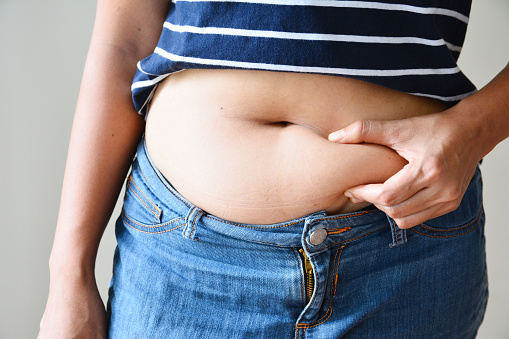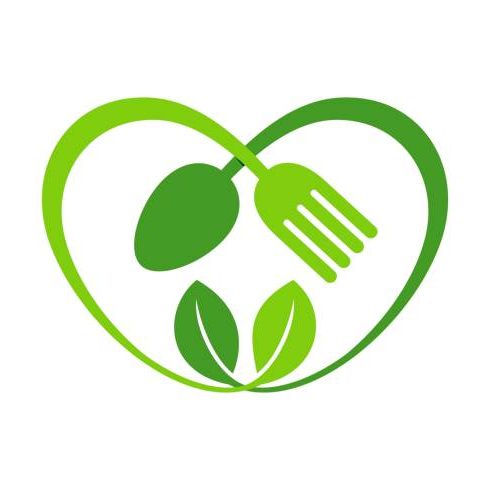-
Gillian McKeith
Gillian McKeith is a nutritionist and television personality known for her focus on holistic health and weight loss. Her prominent work includes the book “You Are What You Eat,” emphasizing the connection between nutrition and overall well-being. McKeith advocates for a plant-based, nutrient-rich diet to support weight loss and improve health. She gained widespread recognition through her TV show, where she examined individuals’ diets and lifestyles to recommend personalized changes. McKeith’s emphasis on the importance of wholesome foods and mindful eating has influenced many to adopt healthier lifestyles.





-
Beginner’s Guide to Holistic Nutrition
Holistic nutrition emphasizes the interrelation between mind, body, and spirit in attaining optimal health. It goes beyond counting calories; rather, its focus lies on nourishing all areas of our being – mind, body, and spirit alike. We will discuss its fundamental principles and practices that will enable you to make informed food choices and ultimately enhance overall wellbeing.

Doing Your Part by Incorporating Whole, Nutrient-Dense Foods
Holistic diet and nutrition emphasizes eating foods rich in essential nutrients – fruits and vegetables, whole grains, legumes, lean proteins and healthy fats all play an integral role in overall health and vitality. Including such nutritious options into your diet provides access to essential vitamins, minerals, antioxidants and fiber for maximum wellbeing and vitality.
Listening to Your Body
A mindful eating practice is central to holistic nutrition. Tune into how different foods make you feel and choose ones that meet individual needs – this approach allows for intuitive nourishment of the body as well as creating healthier relationships with food.
Prioritize Balanced Meals
Prioritize meals that provide a combination of macronutrients (carbs, proteins and fats) as well as micronutrients in equal proportion. Include sources of lean protein, whole grains or starchy vegetables and ample servings of vegetables or fruit into every meal for sustained energy, stable blood sugar levels, proper digestion and overall well-being.
Hydration Is Key
Proper hydration is integral to overall wellness. Aiming to drink an appropriate amount of water each day can help achieve this goal and support various bodily processes, while herbal teas, infused waters and fresh juices may also contribute to this end goal. Pay attention to your body’s thirst signals and aim to drink before becoming parched!
Reducing Processed and Artificial Ingredients
Holistic nutrition and natural food diet emphasize avoiding processed foods, artificial ingredients, and additives which may lack essential vitamins and minerals and contribute to inflammation or other health conditions. Whole, natural alternatives should be preferred and labels read to identify any food containing artificial preservatives, flavors, or colors; whenever possible choose fresh whole foods from local farmers markets instead of processed ones and prepare meals from scratch so as to have full control of what goes into each dish.
Mind-Body Connection
Holistic nutrition recognizes the effect of thoughts, emotions, and stress on overall well-being. Try engaging in stress-reducing practices such as meditation, deep breathing exercises, and mindful movements like yoga or tai chi to reduce your stress level. Cultivate positive mindsets by practicing gratitude; engaging in activities that bring you joy while building healthy relationships is also key for holistic well-being.
Seek Professional Guidance
If you are new to holistic nutrition or have specific health concerns, consulting a qualified holistic nutritionist or a registered dietitian can provide valuable guidance. They will develop an individualized plan tailored specifically to meet your individual needs and goals while taking into account allergy sensitivities or existing medical conditions into consideration.
Holistic nutrition is a holistic approach to nurturing body, mind, and spirit. By choosing whole, nutrient-dense foods that cater to your specific body’s needs while prioritizing balanced meals as part of a balanced lifestyle that reduces processed ingredients while simultaneously nurturing mind-body connections you can enhance overall well-being and attain optimal health.
Read More: How to Prepare Meals for Weight Loss: A Comprehensive Guide
-
Healthy Meal Plans for Weight Loss
Weight loss is an ideal for many, and nutrition plays a key role. Diet can have a tremendous effect on our bodies, and making healthier food choices can help us meet our weight loss goals faster. In this article, we’ll look at satisfying meals to help with weight loss that are both satisfying and nutritional.

Grilled Chicken with Vegetables: When combined, grilling chicken can provide an excellent source of protein while providing an attractive, filling, and nutritious meal. Try grilling some chicken breasts alongside zucchini, bell peppers, or asparagus and adding seasoning such as garlic, oregano and thyme to give them additional flavor without increasing caloric intake.
Salad with Grilled Shrimp: Salads can be an effective tool in weight loss, provided they contain the appropriate ingredients. Opting for one packed with vegetables and lean proteins such as mixed greens, cherry tomatoes, cucumbers and grilled shrimp with a light vinaigrette dressing provides both delicious taste and nutritious value in one convenient dish!
Check meal plan ideas for weight loss on Gillian Mckeith’s official website
Baking Salmon with Quinoa and Vegetables: Salmon is a rich source of omega-3 fatty acids and protein, making it an excellent option for weight loss. Try baking a salmon fillet and serving it alongside quinoa and roasted vegetables like broccoli or carrots as part of a delicious and healthy meal. Quinoa provides both fiber and protein while adding flavor to any dish by roasting veggies such as broccoli.
Turkey Chili: Chili can be an enjoyable and nutritious way to aid weight loss. Try creating your own turkey chili using lean ground turkey, kidney beans, tomatoes and fresh vegetables such as bell peppers and onions. Don’t forget the side of whole-grain bread or crackers for an enjoyable yet healthy meal!
Learn More:
Stir-Fry of Tofu and Vegetables: Stir-fries are an easy and delicious way to pack in plenty of vegetables and lean protein into one delicious dish. Try making one using tofu, broccoli, carrots, bell peppers, low sodium soy sauce or light stir fry sauce as flavor enhancers without adding extra calories – serve with brown rice or quinoa as part of a balanced and filling meal!
Grilled or baked chicken breast with sweet potatoes and green beans: Chicken breast is an ideal source of low-fat protein that can be prepared in numerous ways. Try grilling or baking one for an irresistibly delectable dish served with sweet potatoes (rich in fiber and vitamins) and green beans (low calorie vegetable full of important vitamins and nutrients).
Conclusion
In conclusion, healthy meals for weight loss that are both satisfying and nourishing exist. When selecting lean proteins, vegetables, and whole grains as your building blocks for meal creation that support weight loss goals. It’s also essential to opt for nutrient-dense options while limiting processed or high calorie foods; with just some planning and preparation you can enjoy delicious yet nutritious dishes on your weight loss journey!
-
Is Rice Good for Weight Loss? Or Is It Fattening You?
Rice is a staple food in many parts of the world and is widely consumed due to its versatility and affordability. However, when it comes to weight loss, rice has gotten a bad reputation. Some people believe that eating rice can lead to weight gain, while others believe it can actually help with weight loss. In this blog post, we’ll explore both sides of the argument to determine whether or not rice is good for weight loss.

First, let’s take a look at why rice might be considered fattening. Rice is a type of carbohydrate, and it is high in calories. When people eat too many carbs, their blood sugar levels can spike, which can lead to weight gain. Additionally, some types of rice are more processed than others, which can further increase the calorie count. White rice, for example, has been stripped of many of its nutrients and has a high glycemic index, meaning that it can cause blood sugar levels to spike quickly.
However, it’s important to note that not all rice is created equal. Brown rice, for example, is a whole grain that is minimally processed and retains much of its fiber and nutrients. Brown rice has a lower glycemic index than white rice, which means that it won’t cause as much of a spike in blood sugar levels. Additionally, brown rice is more filling than white rice, which can help people feel full and eat less overall.
When it comes to weight loss, the key is to focus on overall calorie intake and not to demonize specific foods or food groups. If you’re trying to lose weight through following natural weight loss foods, you need to be in a calorie deficit, meaning that you’re consuming fewer calories than your body is burning. Rice can be part of a healthy, calorie-controlled diet as long as you’re mindful of portion sizes and are eating a variety of other nutrient-dense foods.
In addition, research has shown that people who eat rice as part of a balanced diet tend to have a healthier body weight. A study published in the “International Journal of Food Sciences and Nutrition” found that people who ate rice as part of a healthy diet had a lower body mass index (BMI) compared to those who didn’t eat rice. Another study published in the “Journal of the American Dietetic Association” found that people who ate brown rice as part of a low-fat diet lost more weight and had a greater reduction in waist size compared to those who didn’t eat brown rice.
In conclusion, whether or not rice is good for weight loss depends on the type of rice you’re eating and how it fits into your overall diet. White rice is more processed and has a higher glycemic index, which can lead to weight gain if consumed in excess. However, brown rice is a minimally processed whole grain that is lower in calories and has a lower glycemic index, making it a better choice for weight loss. As with any food, it’s important to focus on overall calorie intake and to eat rice in moderation as part of a balanced diet.
-
Healthy Ways to Lose Weight for Women
Exercise and diet could be the primary factors behind losing weight for women. However, other factors are involved.
Studies have shown that everything from quality of sleep to stress level can have a significant influence on appetite, metabolism, body weight and abdominal fat.
Fortunately, making just a few minor changes to your routine and following the best natural diet to lose weight fast could bring huge benefits when it comes to losing weight.

These are the most effective weight loss strategies for women.
1. Cut Down on Refined Carbs
Refined carbs go through a lot of processing that reduces the amount of micronutrients and fiber of the product.
These foods increase glucose levels in the blood, because an increase in appetite and are linked with a higher the weight of your body and abdominal fat.
So, it’s best to avoid refined carbs such as pasta, white bread and packaged foods. Consider whole grain options like oatmeal, brown rice, quinoa, buckwheat and barley in place.
2. Add Resistance Training to Your Routine
Resistance training strengthens muscles and builds endurance.
It’s particularly beneficial for women who are over 50 as it boosts the calories your body burns when you’re not working. It also aids in maintaining bone density, which helps protect against osteoporosis.
Lifting weights using gym equipment or performing body weight exercises are just a few methods to begin.
Read More: 11 Ways to Lose Weight Safely
3. Drink More Water
Water consumption is a simple and effective method to help promote weight loss, with little effort.
According to a study the consumption of 16.9 ounces (500 milliliters) of water increased the amount of calories burned by 30% in thirty to forty minutes.
Research also shows that drinking water prior to eating meals can boost weight loss and decrease the amount of calories consumed by approximately 13 percent.
4. Eat More Protein
Protein-rich foods such as seafood, meat, poultry eggs, dairy and legumes are a crucial element of a healthy diet, particularly in the context of losing weight.
Research shows that a diet plan that is high in protein can reduce cravings, improve feelings of fullness and increase metabolism.
A small study of 12 weeks also showed that an increase in protein intake of just 15% reduced daily calorie consumption by 441 calories, which resulted in 11 lbs (5 kilograms) lost in excess weight.
5. Set a Regular Sleep Schedule
Research suggests that getting enough rest could be as vital for losing weight as exercise and diet.
Numerous studies have linked the lack of sleep with increased body weight and increased levels of ghrelin. This is the hormone that triggers hunger.
In addition, one study on women revealed that getting at minimum seven hours of rest each night, and improving quality of sleep improved the chances of success in weight loss by 33%.
6. Do More Cardio
Aerobic exercise is also known as cardio, raises your heart rate, causing you to burn more calories.
Studies have shown that adding cardio to your workout routine could result in weight loss, especially when it is combined with a healthy diet.
To get the best outcomes, aim for at minimum 20-40 minutes of aerobic exercise every day, or about 150-300 minutes a week.
-
The Best Foods for Longevity
Food choices have the potential to either benefit us or harm us. Our addiction to processed foods can be a source of insufficient nutrition and can lead to ailments such as cardiovascular disease, obesity and type 2 diabetes. But it doesn’t have to be such a situation. We need to eat foods that make us feel energized, lower our risk of developing illness, and enable us to maintain an ideal weight. In order to live longer and to be healthier, we must nourish our bodies with nutritious food items like natural plant foods and natural weight loss foods.

Cruciferous Vegetables
These are powerhouse vegetables that have the ability to balance human hormones, stimulate your body’s detoxification process, and slow the development of malignant cells. Sulforaphane, a cruciferous phytochemical, has been proven to shield blood vessel walls from inflammation signals that could lead to heart disease. Cruciferous vegetables are the most nutritionally dense of all food items.
Salad Greens
Green, raw vegetables—including some cruciferous—contain fewer than 100 calories in a pound, making them a great food item for weight loss. In research studies, women who had an enormous salad prior to the meal consumed fewer calories during the remainder of the meal, and bigger salads reduced calories better than smaller salads. Apart from losing weight, a greater consumption of salads, leafy vegetables, or raw vegetables is linked with lower chances of suffering from heart attacks, strokes, diabetes, and a variety of cancers. Green leafy vegetables are also high in the B-vitamin folate, along with lutein and zeaxanthin carotenoids that shield the eyes from damage caused by light.
Read More: The Best Diet Plan for a Natural Bodybuilder
Nuts
A rich source of nutrient-rich fats, plant proteins and fiber, antioxidants, minerals and phytosterols, nuts are a low-glycemic food, which can help lower the glycemic burden of any meal, which makes nuts an essential component of the anti-diabetic diet. Despite their calorific density, the consumption of nuts is linked with weight loss, likely due to the suppression of appetite due to heart-healthy ingredients.
Seeds
The nutritional characteristics of seeds are like nuts in that they contain healthy fats, minerals, and antioxidants. However, seeds contain higher levels of protein and are rich in trace minerals. Flax, chia, and hemp seeds are high in Omega-3 fatty acids. Chia, flax, and sesame seeds are also high in lignans, which are breast cancer-fighting phytoestrogens. Sesame seeds contain calcium and Vitamin E, while pumpkin seeds are particularly rich in zinc. For the greatest nutritional benefit, these seeds and nuts should be eaten raw or lightly roasted. Consider adding flax or chia seeds to your breakfast smoothie or oatmeal.
Berries
The antioxidant-rich fruits are healthy for the heart. Research conducted on participants who ate blueberries and strawberries on a daily basis for a period of time, showed improvement in blood pressure levels, symptoms of oxygenative stress and LDL cholesterol. Berries also contain anti-cancer benefits and are a fantastic food source for the brain. There is evidence to suggest that berry consumption can help to prevent cognitive decline as we age. Keep using the well-known and classic blueberry and strawberry or explore something completely new, such as Goji berries.
-
Easy Tips to Design a Diet Chart for Healthy Weight Loss
Many of us have read the best-selling book The Secret, which says that the more we concentrate on things we don’t like, the more of that thing we will get. Frustrating! Particularly with regards to attempts at, whether it’s using this, that, or other diets for weight loss. Many women are always trying to lose weight because, according to them, their ideal weight is always beyond their reach. There’s nothing magical about this. It is logical to conclude that the longer we imagine I shouldn’t eat this cake that we’re thinking about, the more our minds will be focused on that cake instead of the healthier alternatives that are on our diet charts. The craving grows until we binge…and afterwards, we feel guilt-ridden.

Simple tips for designing a healthy diet chart for fat loss.
Small tweaks are fine.
Reduce your intake of processed and packaged foods as they’re typically filled with sodium, which can cause bloating and a higher chance of developing heart issues. If you can, consume fresh fruits and vegetables, and prepare your juices by throwing diced fruit and vegetables in a blender. Remove the white (rice sugar, bread, and rice) and opt for brown. Choose whole wheat or multigrain flour instead of refined flour.
Visit Dr. Gillian Mckeith’s official website for the best natural diet plan to lose weight fast.
Eat seasonal fruits.
Consume seasonal fruits at your local grocery store instead of importing whatever you can find out of season. Seasonal fruits are usually filled with the substances that your body requires for the time of season; e.g., citrus and guava, both of which are rich in Vitamin C, come to the market during the winter months, right when you’re in need of the vitamin to protect yourself from the common cold.
Stir-fry is a better choice than deep-fry.
A few samosas aren’t going to ruin your diet plan for weight loss. However, on a regular basis, it’s a better option than deep-frying since it keeps the calorie count low without sacrificing flavor.
To increase the metabolic basal rate
Take a few small meals throughout the day. This gives your body the assurance that food is coming, which reduces the amount of calories stored and burns off fat. A small portion of food isn’t a packet of crisps or vending machine coffee. It’s an apple, or a small portion of the trail mix (dry fruits and unsalted nuts), or a tiny bowl of dal with Roti, or a bowl of oatmeal.
Do some training that is light.
This improves muscles, which gives our body a more defined appearance, and also increases the metabolic rate at the base. A regular workout using lightweight weights-or moderate in intensity in case you aren’t able to perform more-causes the body to continue burning calories even after you’ve quit exercising. A mere 5-10 minutes per day is more than doing nothing. It’s not difficult to shift your perspective and to achieve lasting weight loss.
Read More: 10 Weight Loss Foods That Are Natural and Backed by Science
-
Should a Healthy Diet Plan Consist of Raw Foods?

A raw diet works exactly what it sounds like — it’s a form of veganism that is based on taking raw, non-processed and uncooked meals. It is sometimes referred to as raw vegan diet.
Therefore, all meat and poultry, dairy eggs, in addition to all foods that contain animal by-products are not allowed from this healthy diet plan. The diet permits to use a dehydrator for food as the sole means to “cooking” food, but food items should not be cooked to temperatures above 118°F (48°C).
The base of this diet founded on the belief that food that is raw has the most energy and are based on the thermodynamic principles. When you cook food and cook them, nutrients are removed and vital enzymes within the food are destroyed. Therefore, food items in their natural, raw state are the best to our health.
The benefits from a Raw Food Diet
While only a few large-scale research studies have been conducted on the raw food diet however, the results of studies have demonstrated some health benefits. Furthermore, there are many stories of improvements in overall health of those who have been following the diet for an extended duration of time. According to the advocates of this type of diet, following raw foods keeps the enzymes that are present in food and aids digestion and improves intake of nutrition. Furthermore, there are more nutrients in raw foods since heating and cooking certain foods can reduce the amount of vitamins in the food, particularly vitamin C and E. Studies have revealed that people who eat eating raw foods were significantly more enriched in antioxidants in their systems when compared to those who eat an omnivorous, cooked diet.
Dietary antioxidants are believed to have anti-cancer properties in numerous studies. Research studies of eating raw foods also observed significant weight loss due to the switch to this diet which is beneficial for people who are obese or overweight. It has also proven effective and recommended to people who suffer from digestive or bowel issues (particularly constipation) because it is rich in fiber.
A healthy gut microflora can be connected to a decrease in gut inflammation due to the fact that healthy gut bacteria create nutrients that decrease inflammation. Indeed, many people following the raw foods diet say that they have chosen this diet due to health benefits particularly the treatment and prevention of illnesses. Furthermore, switching to a raw food diet has been linked to lower levels of LDL cholesterol; this is also known as “bad” cholesterol that is associated with cardiovascular diseases. This is likely because the diet is free of most of the usual sources of fats, like red meat and dairy.
-
Hello World!
Welcome to WordPress! This is your first post. Edit or delete it to take the first step in your blogging journey.
Food
Health Guru Tips
